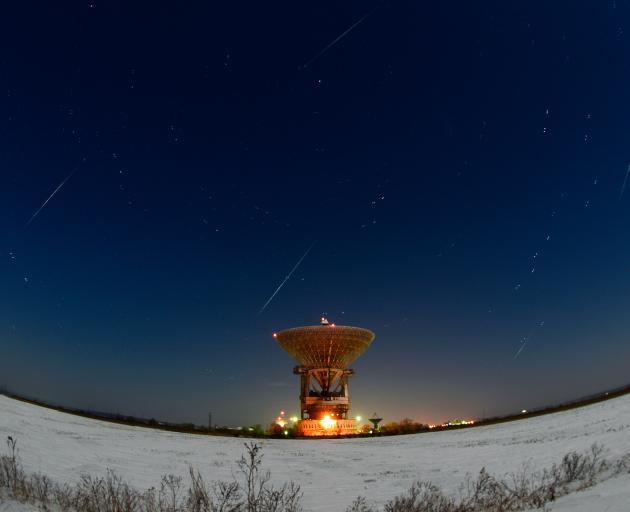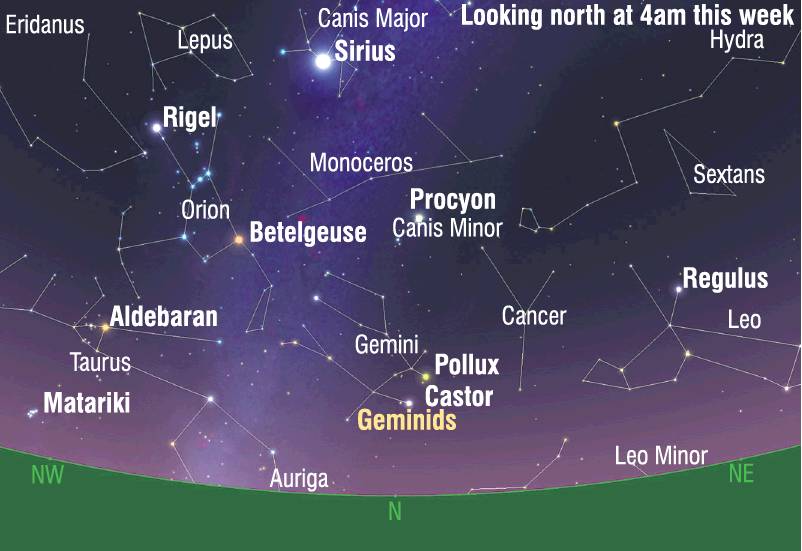
Get ready for a cosmic treat. That's because the nights of December 13 and 14 mark the best time to view the Geminid meteors, says Ian Griffin.
In the northern hemisphere this is one of the finest meteor displays, with predictions of as many as 100 meteors every hour.
However, in our part of the world the constellation Gemini (from where the meteors appear to radiate) never gets very high in the sky.
This means the number of meteors we see will be considerably less than our northern hemisphere cousins; from Otago I'd be surprised if anyone sees more than 20 meteors per hour.
While this isn't particularly exciting, because the moon is a waning crescent, the sky will be fairly dark, so conditions will be very good for sighting shooting stars.
The Geminid meteors appear to come from the direction of the star Castor. As the star chart shows, Castor is highest in the sky just before 4am.
In order to give yourself the best chance of seeing meteors, you will have to get up early and find yourself a spot with a decent view to the north. You won't need binoculars or a telescope because the individual meteors are bright enough to see with your unaided eye.
The parent body for the Geminid meteors is an asteroid called Phaethon.
The meteors we observe probably originated from an ancient collision between Phaethon and another asteroid.
The collision produced a stream of debris that Earth is crossing this week, and it is the burning up of that material high above us in the earth's atmosphere that creates the shooting stars we see.
Phaethon, is estimated to be 5km across. It has an unusual orbit that takes it very close to the sun. For this reason, astronomers named it after the character in Greek mythology who was son of the sun god Helios.
Phaethon's orbit also crosses those of Venus, Earth and Mars, and it is classified as a "potentially hazardous asteroid'', which means that at some future date it might collide with Earth. But fortunately this is not likely to happen in the near future.













